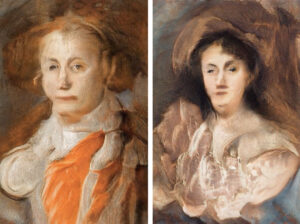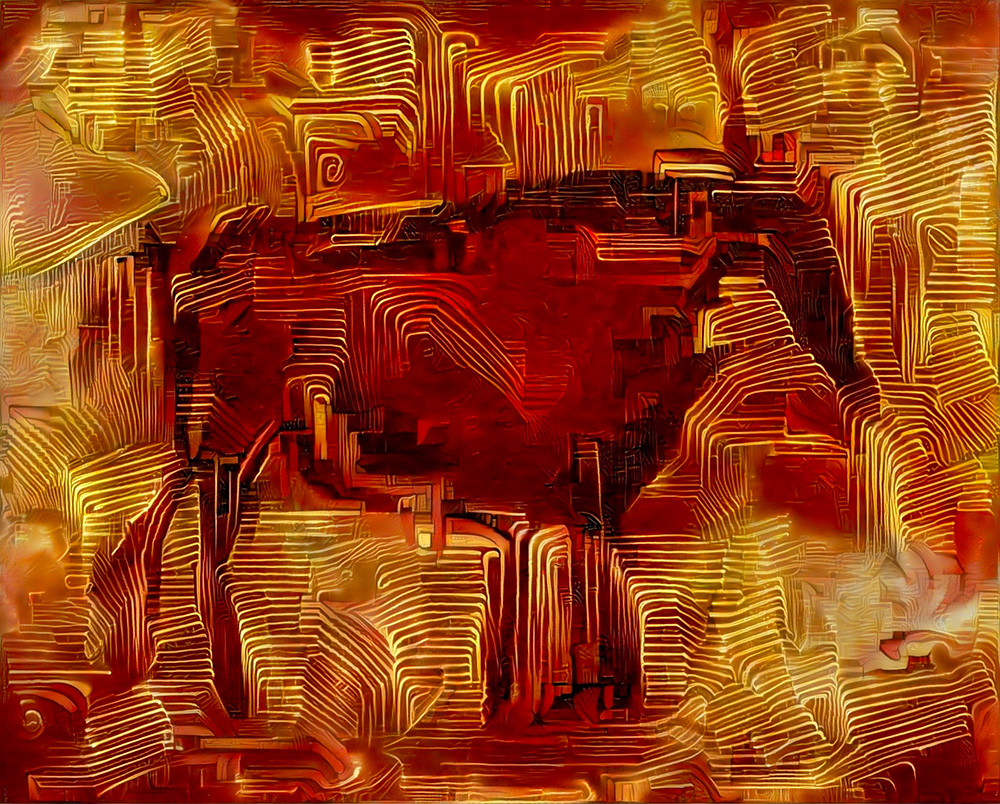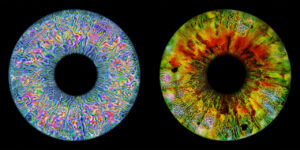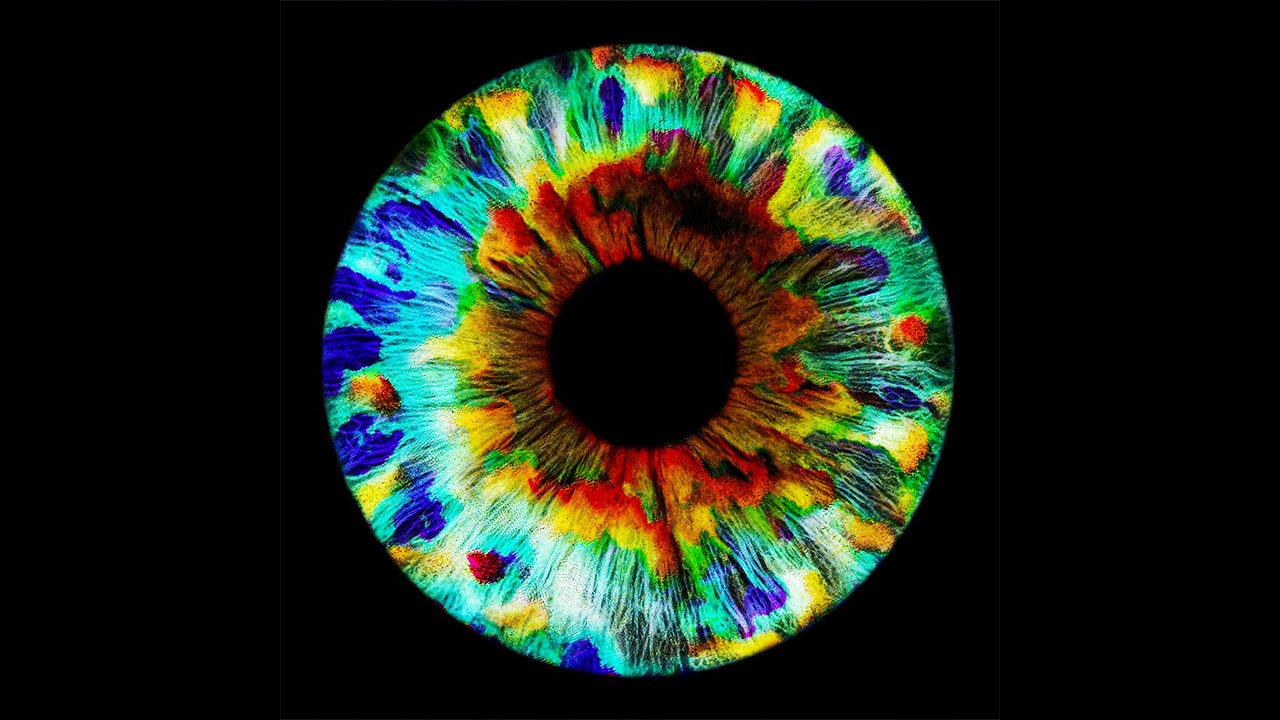Long before a guy named Beeple arrived on the auction block, ready to reset the aesthetic and market value of digital art, there was Obvious. In 2018, the French art collective was responsible for the first artificial intelligence-generated artwork to be sold at a major auction: “Edmond de Belamy,” created by a machine learning algorithm, went for $432,500 at Christie’s, smashing the estimate 40 times over. It was a splash.
Less publicized was Obvious’ participation in the NFT space. For as long as the trio has been active, it has been minting NFTs of works created using Generative Adversarial Networks (GANs) — generated landscapes, mugshots, and animated maps that, on average, sell for 2 ETH on SuperRare. Unlike Obvious’ physical canvases, which are printed from digital files in order to better engage the attention of the art establishment, these works remain digital, in a format that the group rates as artist-friendly.
“We’ve always found the NFT medium interesting because it allows you to publish your work in a very easy way,” Gauthier Vernier, Obvious Co-Founder, tells Jing Culture & Commerce. “We love the discoverability and how the market is functioning. We love the mechanics of it.”

Obvious’ Portraying series, generated with GANs and released with Kamel Mennour in 2021. Image: SuperRare
As NFTs skyrocketed in popularity in 2021, Obvious has seen its digital sales outstrip its physical ones, with the collective making some high-profile moves deeper into the space, notably with the release of its Portraying portrait NFTs, in collaboration with art gallery Kamel Mennour. Most recently, Obvious is presenting 10 new digital works at the Museum of Crypto Art’s (MoCA) CryptoArt Revolution conference in Paris from December 15 to 16. Titled A Eye, this latest series delves into how modern surveillance has been newly aided by AI, through artworks that have been generated by — what else? — AI.
While the works will be on physical exhibition, they’ll also have a space of their own on CryptoVoxels, marking Obvious’ first-ever foray into the metaverse. “We were able to design an exhibition that we couldn’t design in the real world,” says Vernier. “We really like the parallel between the metaverse and the physical space, and being able to kind of conquer both lands at the same time.”
Suitably, the metaverse was the subject of conversation at “Into The Metaverse,” a one-day event co-presented by LeBook and Tmint at Carreau Du Temple in Paris, with a panel featuring Obvious, among other NFT players. Following the talk, Vernier shared more with us about the collective’s first metaverse project and how it’s viewing the fast-evolving realm of NFTs.
Why did Obvious decide to get involved with NFTs years ago?
We’ve always had a production of NFTs since 2018 on SuperRare. It was one of the first NFT platforms and we participated in its beta version. We’ve always been doing both [physical and digital art] because it was our mission to make AI art well known in the traditional art world, and to do that, we had to print artworks. But as NFTs have developed and the whole market for NFTs has evolved, when we now sell artworks on SuperRare, they are more expensive than our physical pieces.

“Parietal Burner #2” NFT, a work that mashes up Obvious’ AI interpretation of Lascaux cave art, combined with street artist’s Bond Truluv’s brush strokes that were applied by style transfer algorithms. Image: @obvious on SuperRare
What do you make of how the market for NFT art has boomed in the past year?
It’s been really interesting because we’ve seen a market being born. We see a new wave of collectors who are getting interested in art and who are different — we kind of identify more with them. It’s also more community-based and really interesting to see art developing in that way because art has always been a social medium. With NFTs, the art is really based on the social side of things: [NFT artists] exchange so much and they show their artwork so much more.
How did Obvious’ collaboration with MoCA come about?
At the beginning, [Benoit Couty, Founder of MoCA] bought an artwork from us for his collection. We started discussing and he had this idea of giving us land on the metaverse to exhibit our art. We started collaborating, and we found an idea that he also liked and that we’ve wanted to explore for a long time. We are very happy that we can finally show this idea because we think it fits with the metaverse.

Obvious’ latest series, A Eye, released in partnership with the Museum of Crypto Art. Image: @obvious_art on Instagram
Will the metaverse exhibition differ from the physical one?
The same works [will be on show], but there will be one special artwork that will be animated and minted on SuperRare. The other ones will be prints, so they will be different versions of artworks and they will be sold on KnownOrigin for a smaller price. It’s also the first time that we are making our art more accessible because our works sell for quite a bit on SuperRare, so we’re really excited to see how people react to that.
Obvious’ AI art has also been shown in institutions from Hermitage Museum to the Museum of Civilization in Quebec. What do you make of how museums have responded to crypto or digital art?
For now, museums are still more interested in our physical works. Except for specific museums or exhibitions, what we see is that classical museums are still more into displaying physical pieces. But we work with a gallery, Kamel Mennour, one of the top galleries in France that wanted to get into NFTs to see how people responded, so we can say that galleries are getting quite excited about this.
Museums are probably going to take a bit longer because when [crypto art] enters a museum, it enters the culture, so I think they need to wait a bit more to see what’s worth showing to the general public and what’s not. I think they’re just taking their time, but it’s probably inevitable that NFTs are going to get into the museum at some point.



